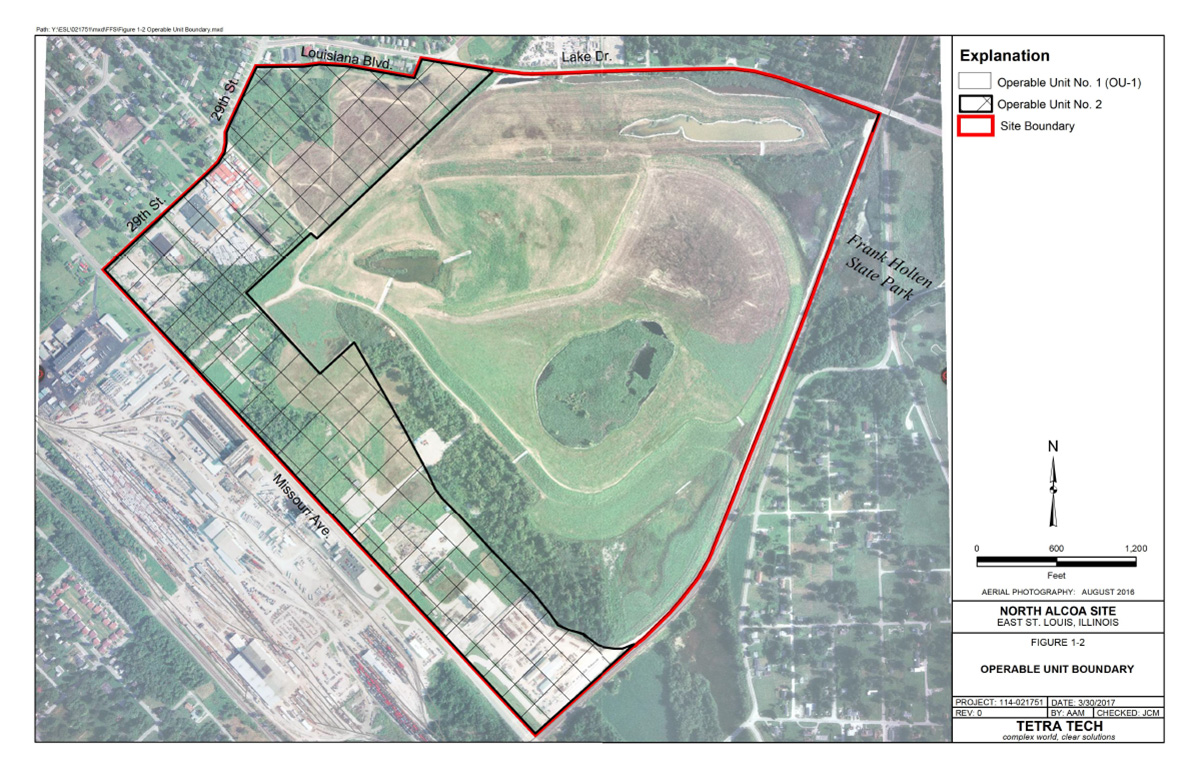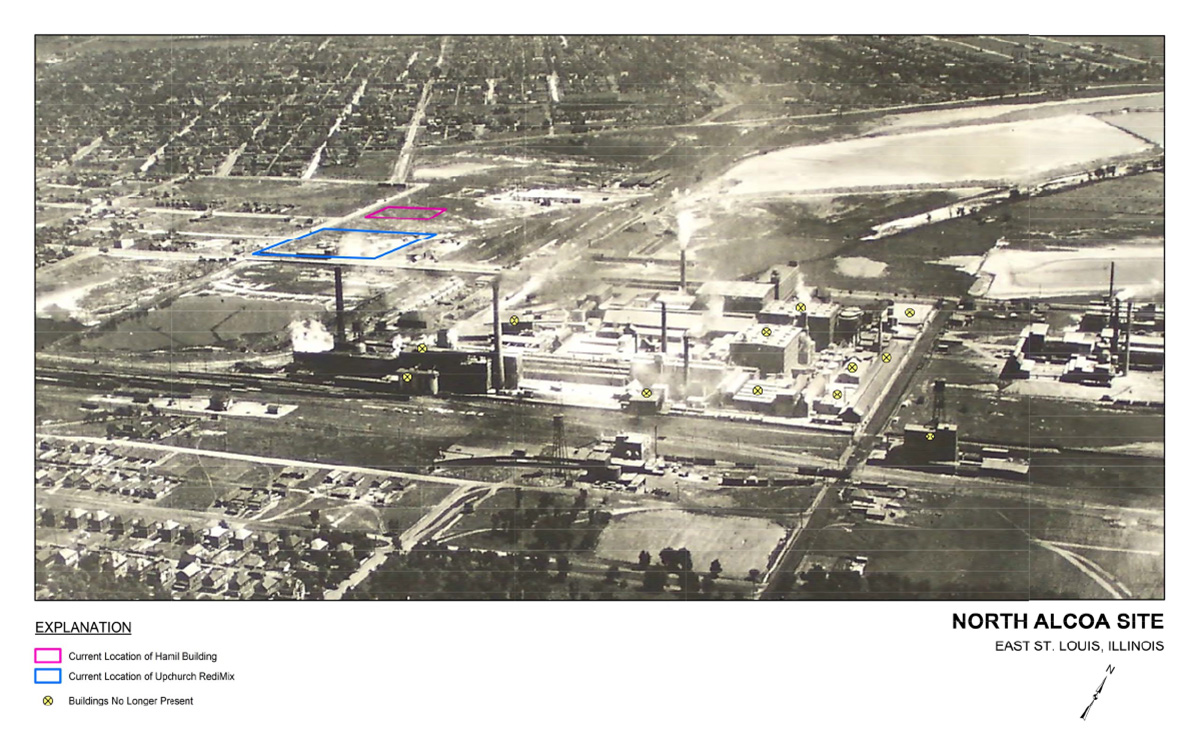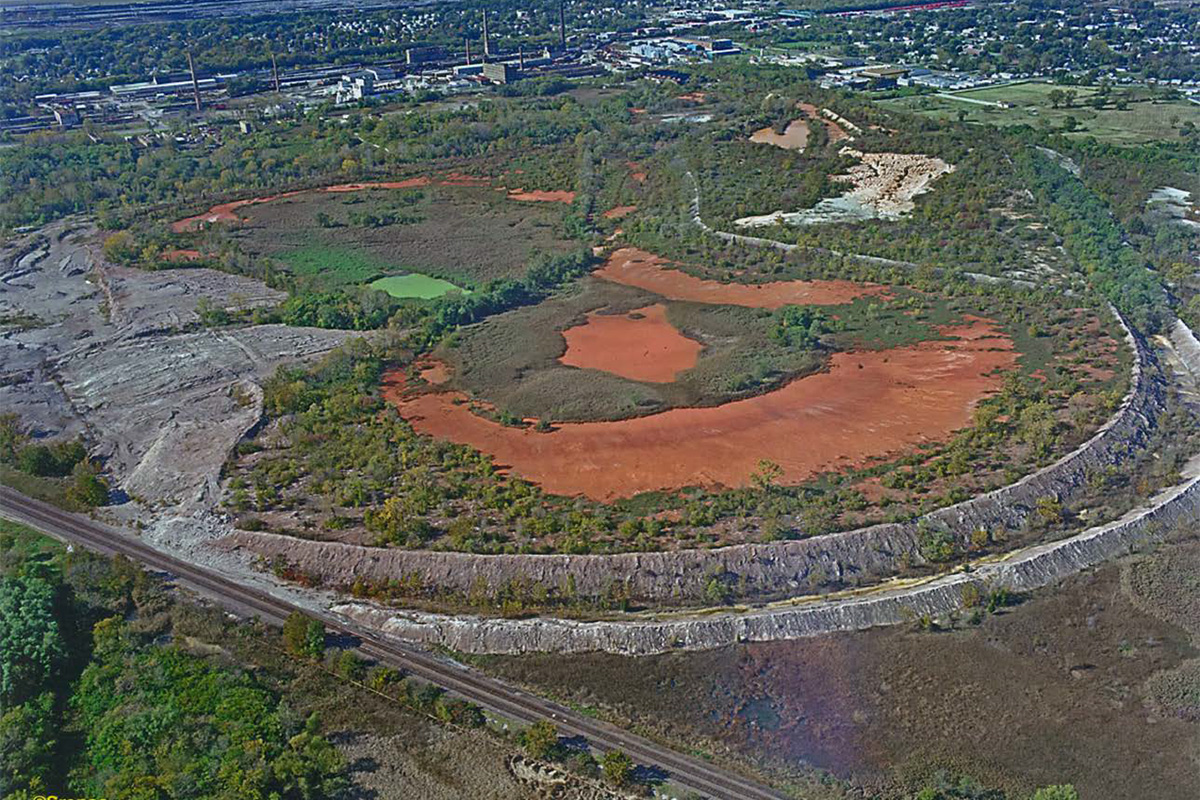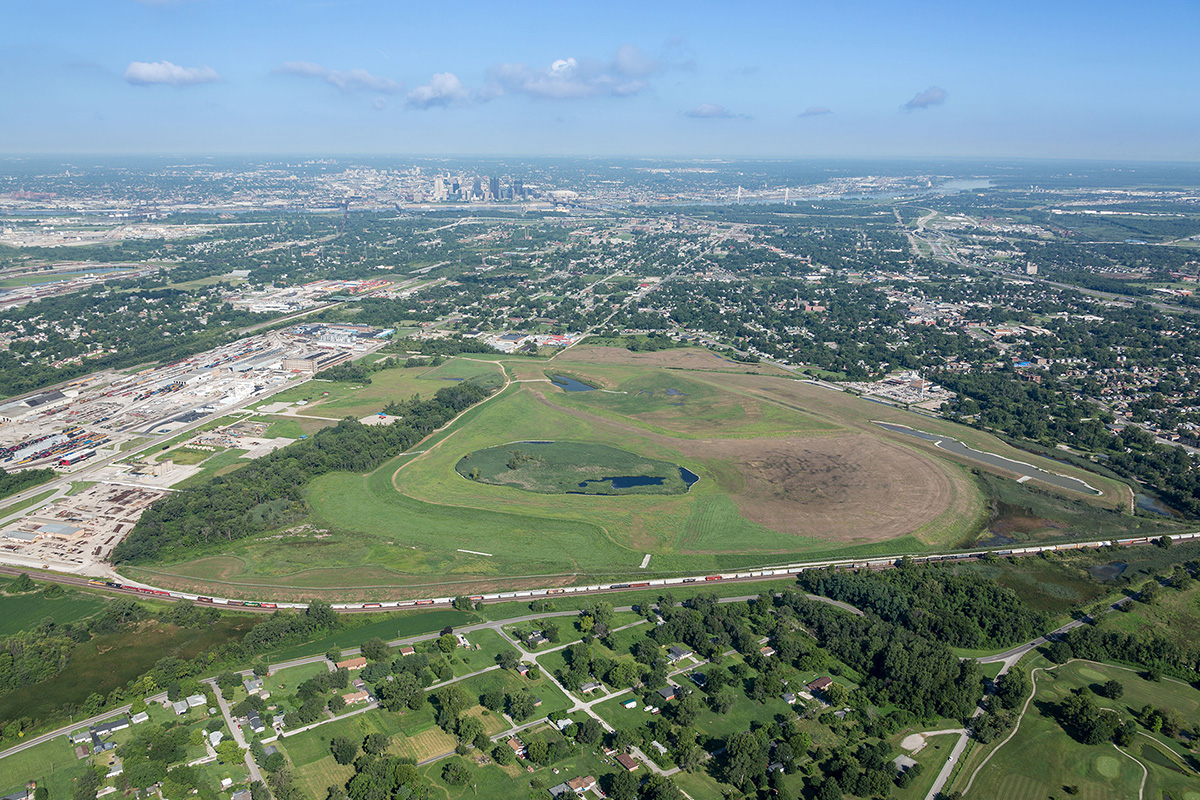About the Project
SITE HISTORY
The North Alcoa site consists of approximately 400 acres located in a mixed-use area of East St. Louis. The property is bounded on the north by Louisiana Boulevard and Lake Drive, on the east by the Alton and Southern Railroad and Pocket Road, on the south by Missouri Avenue, and on the west by 29th Street.
Manufacturing began at the site more than 100 years ago when the Pittsburgh Reduction Company (later renamed the Aluminum Company of America and then Alcoa Inc.) constructed an alumina refinery. Industrial operations occurred mostly on the south side of Missouri Avenue where alumina was produced from bauxite ore. The bauxite residue remaining after manufacturing was used to fill in the former Pittsburg Lake. Later, berms were constructed, and the residue was stored in residue disposal areas or RDAs. There were three RDAs on the site, each approximately 40 acres in size. The berms were constructed with gypsum materials, a by-product of Alcoa’s manufacturing operations. The precise date of the historical photograph at the link below is unknown but is probably from the late 1940’s.

July 14, 1930
Operation of the Alumina refinery ended in 1958. That portion of the site containing the residue disposal areas is currently owned by the City of East St Louis.
RESTORATION HISTORY
The 400-acre site was divided into two areas: OU-1 (approximately 225 acres, including the Alton and Southern Railway Third Rail Project Area) and OU-2 (approximately 180 acres). Since 2002, Alcoa, the City of East St Louis, the Illinois Environmental Protection Agency (IEPA) and the U.S. Environmental Protection Agency (US EPA) have conducted investigations to document site conditions and develop options for rehabilitation and possible reuse of the OU-1 property. The bauxite residue within the residue disposal areas is soft and tends to not be suitable for building construction, which limits alternatives for redevelopment. The investigations performed included a risk assessment which concluded that the OU-1 property would not be suitable for residential development and that a soil cover would be needed to protect workers against exposure to the materials with any future commercial or industrial use. The remedy implemented for OU-1 included: Containment with Placement of a Compliant Cover and On-Site Storm Water Management. This remedy consisted of placing at least two feet of cover material over the residue disposal areas to contain the materials within. The cover is in full compliance with Illinois rules and regulations on solid waste containment. The area was re-graded to create slopes that direct storm water drainage to basins designed to contain a 100-year storm water event. The existing ponds were incorporated into the design for those storm water basins; the following figures show the OU-1 site before rehabilitation and after remedy implementation:


OU-2 consists of mixed-use industrial/commercial and residential properties surrounding OU-1 to the north, south, and west where investigations determined that residue is present. In June 2020, US EPA issued a Record of Decision (ROD) that documents the remedy for OU-2. On December 16, 2021, the Department of Justice lodged with the US District Court for the Southern District of Illinois, the Consent Decree, Case No. 3:21-cv-01694. The ROD remedy generally consists of removing a minimum of the top two feet of material where residue is present on designated properties, consolidating the removed material beneath a clean soil cover on OU-1, covering the excavated areas with at least two feet of clean soil, and managing any remaining subsurface residue in place. Storm water will be maintained on site.
Waste Management National Services (WMNS) will serve as the prime contractor through completion of the OU-2 remedy construction. It is anticipated that the remedy construction will be completed in August 2023. Following completion, inspection of the cover systems will continue to occur as has been conducted for OU1 to assure that the cover layer is properly maintained.